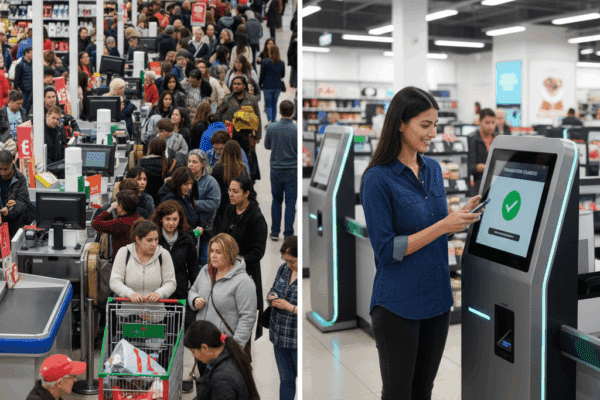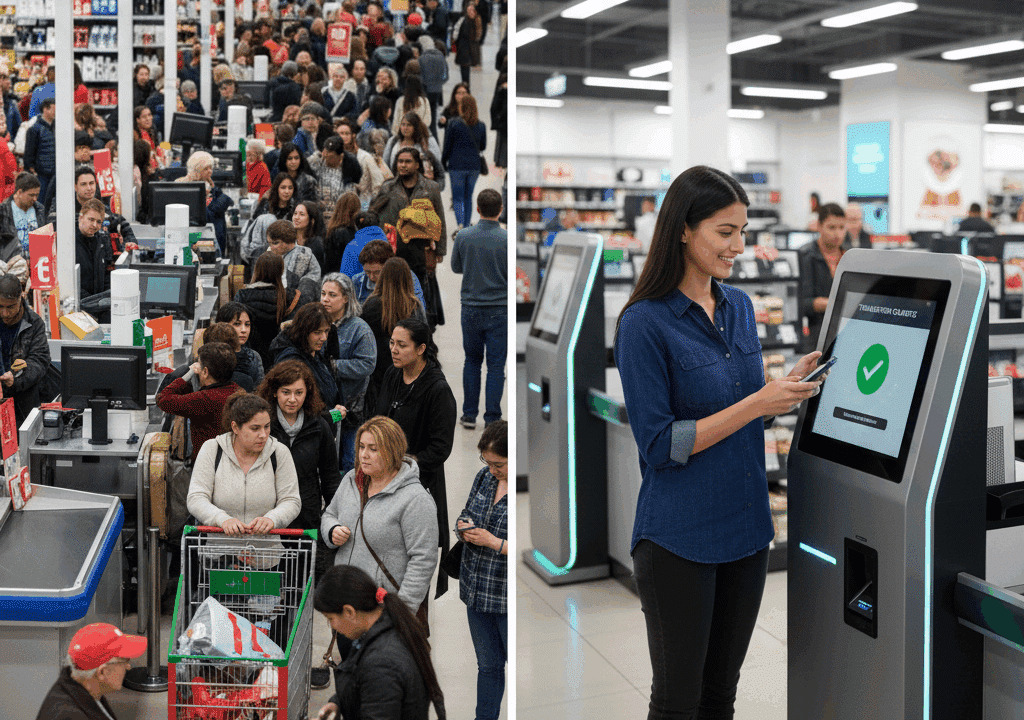
Stay Ahead of the Game: Optimize Your Inventory Management System
Effective inventory management is key to the seamless operation of any business that deals in goods, whether it be a manufacturing company or a retail store. Inefficient inventory management and, thus, poor inventory visibility, can lead to significant challenges, including overstocks, stockouts, and even financial losses for a retail business. However, with optimized inventory management, such hindrances can be prevented, boosting business productivity and bottom line profitability.
The Importance of Understanding Inventory Management
Inventory management refers to the process of efficiently overseeing the constant flow of units into and out of an existing inventory. It involves balancing the costs of inventory holding against the benefits of buffer stocks to minimize costs while avoiding shortages. An inventory management system is used to manage stock levels, orders, and purchasing. There are several key components of an effective inventory management system.
First, inventory management involves stock tracking. This means closely monitoring stock quantities and stock movements. Barcodes, serial numbers, and radio frequency identification tags can help track inventory. Advanced inventory management software provides real-time inventory tracking and visibility across locations. Data is drilled down into clear inventory reports that provide business insights to guide future inventory planning and processes.
Next, inventory management revolves around order management. The basic function of the system is to manage ordering processes, from sending purchase orders to suppliers to receiving stock from manufacturers. Purchasing automation helps optimize and speed up ordering.
Inventory management also heavily relies on demand forecasting. Using historical data and sales records, businesses can predict future demand. Keeping track of demand trends helps growing businesses ensure sufficient stock availability to meet consumer needs without excessive inventory buildup.
The Crucial Role of Inventory Management in Business Operations
Inventory visibility is vital for smooth business operations across industries. It directly impacts sales, costs, and profitability. By ensuring purchasing automation, providing prompt order fulfillment, minimizing shortages, reducing tied-up capital, and optimizing supply chain coordination, proper inventory management provides significant strategic and bottom line advantages.
One of the main benefits of inventory visibility is avoiding stockouts. Stockouts result in lost sales because customers cannot purchase out-of-stock items. This directly diminishes revenue. With effective forecasting and stock tracking, businesses can prevent stockouts and ensure prompt order fulfillment across sales channels.
Inventory management also reduces inventory costs. Carrying costs, waste, spoilage, theft, and taxes contribute to inventory holding costs. By optimizing stock levels, inventory management reduces excess inventories, thereby lowering holding costs. Just-in-time techniques further minimize inventories.
Additionally, inventory management improves supply chain management. With real-time inventory visibility across the supply chain, businesses can coordinate manufacturing, purchasing, and logistics. This improves planning and builds stronger relationships with suppliers.
Overall, inventory management is essential for financial control, operational efficiency, and customer service. Businesses cannot thrive without accurate stock tracking that properly manages stock levels.
Key Benefits of an Optimized Inventory Management System
An optimized inventory management system provides many benefits that improve operations and boost bottom line performance. The key benefits include:
- Increased sales: By avoiding stockouts, businesses can fulfill more orders and increase sales. Customers get the products they want when they want them.
- Reduced costs: Lower inventory levels lead to reduced holding costs. Less tied-up capital also improves cash flow.
- Improved customer satisfaction: In-stock items and fast fulfillment times improve the customer experience. This builds loyalty and retention.
- Better planning: Inventory analysis identifies fast/slow-moving items and trends in retail stores. This allows better forecasting and production planning.
- Higher productivity: Inventory management frees up staff time spent on manual stock counts and order placement.
- Supply chain coordination: Sharing stock data improves inventory visibility, allowing suppliers to better coordinate production and delivery.
- Loss prevention: Tracking inventory makes it easier to identify losses from spoilage, theft, or damage.
- Data-driven decisions: Reporting provides insights to guide inventory policies and investments.
- Flexibility & scalability: Automated systems readily adapt as inventory needs change.
Optimized inventory management is indispensable for efficiently running complex, fast-paced supply chains. It provides complete inventory control and inventory visibility to minimize costs and maximize service.
Techniques for Effective Inventory Management
Using Technology in Inventory Management – ERP, AI, Machine Learning
Technology plays a pivotal role in effective inventory management solutions. Solutions such as ERP systems integrate inventory features like automated purchase orders, order processing, inventory control, supply chain management, and more to give businesses complete visibility and control. ERP provides real-time data to help optimize stock levels, reduce carrying costs, and improve customer service.
AI and machine learning algorithms can analyze past demand patterns and external factors to generate remarkably accurate demand forecasts. This enables businesses to plan inventory levels and placements to align with projected demand. Machine learning also enables automation in processes like inventory tracking, order management, and replenishment.
Barcode scanning, RFID tags, and IoT sensors streamline tracking across facilities and sales channels. They provide real-time inventory data to optimize stock counts, placements, and reorder points. Warehouse management systems and warehouse automation solutions also increase operational efficiency.
Applying Just-In-Time (JIT) Inventory Management
Just-in-time inventory management focuses on reducing inventory costs by having just enough stock to meet immediate demand. The goal is to eliminate excess inventory that creates costs without value.
Businesses need excellent supply chain coordination and effective forecasting to succeed with just-in-time inventory management. Production plans and schedules must align closely with actual demand patterns. Any disruptions can lead to shortages and stockouts. However, effective JIT techniques like Kanban can optimize inventory turns and reduce average inventory significantly.
Just-in-time inventory management is ideal for businesses with predictable, stable demand patterns. Industries like manufacturing, automotive and consumer electronics have successfully leveraged JIT techniques. But businesses may need safety stock and more inventory flexibility to handle demand fluctuations.
Implementing the ABC Analysis Technique
ABC analysis divides inventory into three categories based on value – A is extremely valuable, B is important, and C includes products with relatively low value. Inventory management efforts then focus on tighter control over A products.
Businesses can use Pareto’s 80/20 rule as an initial benchmark – A products account for roughly 20% of total inventory but contribute 80% of sales value. B products represent about 30% of inventory value and 15% of sales. C items make up 50% of inventory but just 5% of sales value.
ABC analysis is invaluable for identifying high-value products that need the greatest inventory monitoring and control. Managing A products effectively has an outsized impact on profitability and customer service. ABC analysis also helps businesses optimize warehouse layouts, forecasting, replenishment, and more to align with actual product value.
Essential Tools & Strategies for Optimized Inventory Management
Inventory management systems are a crucial component of supply chain management. They involve tracking inventory levels, forecasting demand, generating purchase orders, and optimizing stock levels. Effective inventory management balances the costs of excess stock against stockouts and ensures sufficient inventory to meet customer demand.
Implementing an advanced inventory management software solution provides real-time inventory visibility across multiple locations and sales channels. Key features include demand forecasting, order management, stock tracking and control, and analytics. This enables data-driven decisions to optimize inventory levels and minimize costs.
Beyond software, strategies like Economic Order Quantity (EOQ) models and safety stock calculations help determine ideal order sizes and buffer stock levels. Adopting these tools and strategies allows businesses to gain control over their inventory, improve efficiency, avoid stockouts, and, ultimately, delight customers.
Advanced Inventory Management Software as an Essential Tool
Inventory management software is a must-have for multichannel sellers. It provides complete visibility and control over inventory across physical retail stores, warehouses, online stores, and other marketplaces.
Key capabilities include tracking stock levels in real-time, managing purchase orders and shipments, synchronizing inventory data across channels, generating reports, and forecasting demand. This allows businesses to optimize stock levels, minimize carrying costs, prevent stockouts, and automate repetitive tasks.
Leading solutions offer robust features tailored for small businesses. This includes multi-location and multi-channel inventory tracking, reorder point notifications, and the ability to integrate with e-commerce platforms. Mobile apps enable real-time inventory visibility on-the-go.
Implementing the EOQ Model in Your Inventory Management
The Economic Order Quantity (EOQ) model is an inventory management strategy that determines the ideal order size by balancing inventory holding costs against order costs. It aims to minimize total annual costs.
EOQ considers factors like annual demand volume, fixed replenishment costs per order, variable unit costs, and annual holding costs per unit. The optimal order quantity minimizes the sum of annual order costs and annual holding costs.
While simplified, EOQ provides a starting point for determining order sizes. Businesses can use inventory management software to implement automated EOQ calculations and integrate with purchasing workflows.
Safety Stock: A Strategy for Risk Management
Safety stock is extra buffer inventory carried to mitigate risks of stockouts from demand fluctuations or supply delays. It provides insurance against uncertainties in supply and demand.
Safety stock levels can be calculated using historical sales variability, desired service levels, and lead times. Higher safety stock increases availability but also inventory carrying costs. The ideal level minimizes total costs.
Businesses can leverage inventory management tools to calculate and track safety stock levels for each product. Integration with demand forecasting enables dynamic safety stock management tailored to each item.
Measuring the Performance of Your Inventory Management System
For businesses that sell physical products, effective inventory management is essential for success. Proper inventory management ensures you have the right products in stock to meet customer demand while avoiding overstock situations. To assess how your inventory management is performing, you need to establish and track key performance indicators (KPIs). Utilizing metrics like inventory turnover rate provides visibility into the effectiveness of your inventory management approach.
Key Performance Indicators (KPIs) in Inventory Management
Tracking key metrics is vital for monitoring and optimizing inventory management. Some of the most important KPIs include inventory turnover rate, days sales of inventory, item fill rates, excess stock, and out-of-stock levels. The inventory turnover rate measures how many times the average inventory sells during a period. A higher turnover indicates better efficiency and inventory utilization. Days sales of inventory calculate the average number of days it takes to sell through stock on hand. Lower days sales are better for working capital. Item fill rates track the percentage of orders filled completely. High fill rates mean inventory availability aligns well with demand.
Other crucial indicators help identify excess or shortage situations. The value of excess or obsolete items should be minimal. Out-of-stock KPIs reveal lost sales opportunities when customers can’t purchase products immediately. Businesses also analyze stockout causes, whether from poor demand planning, ineffective replenishment, supply delays, or forecast inaccuracies. With real-time monitoring of these metrics, managers can address root causes and continuously optimize inventory productivity, availability, and investment return through data-driven decisions. Actionable analytics is key for inventory management success.
Utilizing Inventory Turnover Rate as a Measuring Tool
Inventory turnover rate is one of the most insightful metrics for benchmarking inventory management performance. It measures how efficiently you’re managing inventory levels relative to sales activity.
To calculate inventory turnover use this formula: (Cost of goods sold) / (Average inventory). A higher turnover ratio indicates inventory is being sold more frequently, reducing carrying costs and spoilage. For example, a turnover rate of 5 means your average inventory sells 5 times per year. Compare your inventory turnover rate to industry benchmarks to assess performance. Use the metric to identify fast and slow-moving products. Turnover trends also reveal when your approach may need rebalancing to align stock levels with demand.
By regularly monitoring the inventory turnover rate alongside other key inventory management KPIs, you gain crucial insights for optimization.
Understanding Stockout and Overstock Situations
Maintaining optimal inventory levels is crucial for businesses to meet customer demand and maximize profits. However, ineffective inventory management can lead to problems like stockouts or overstocks. A stockout occurs when the inventory for a product is completely depleted, and the item is unavailable for customers to purchase. This can happen from inaccurate demand forecasting, supply chain disruptions, or inefficient inventory tracking. Stockouts result in immediate lost sales and dissatisfied customers who may take their business elsewhere. On the other hand, an overstock situation means a business has excess inventory exceeding real-time or projected demand. Companies can accumulate overstocks due to poor predictions, seasonality mismatches, or bulk purchase discounts. Overstock leads to increased carrying costs for storage and warehousing, capital tied up in inventory, and the risk of obsolescence as products remain unsold.
Businesses must routinely analyze historical sales data, marketing insights, supplier lead times, and both macro and micro market trends to achieve optimal stock levels. Perpetual inventory systems provide real-time transparency, while advanced analytical models help anticipate fluctuations in demand. When tuned properly, these systems trigger automatic restocking, transfers between locations, or reorder points. However, unexpected variances still occur. The best defenses are establishing safety stock levels and working closely with supply chain partners. With vigilant monitoring and nimble adjustments, companies can minimize revenue losses from stockouts and overstocks even amidst volatility. The goal of inventory management is maintaining that delicate balance between availability and excess.
Cost Considerations and Analysis
The initial costs include software purchase/licensing fees which can range from a few hundred to thousands of dollars depending on the size and complexity of the system. There are also costs for hardware like barcode scanners and printers, which may add a few thousand dollars. Implementation and customization services, if required, can also cost tens of thousands of dollars.
Ongoing operational costs include software subscription fees ranging from $50-$150 per user per month for cloud-based systems. Additional costs include employee training and support, which may require hiring a full-time inventory manager. Upgrades to the software and replacement of hardware over time may cost thousands per year. Companies also need to account for the cost of employees to enter and maintain data in the system. Depending on the size of the inventory, this could equal 1 or more full-time employees.
The total cost of ownership should be weighed against the benefits. Modern systems can provide real-time visibility into inventory data across multiple locations. This allows companies to optimize stock levels, minimize waste due to spoilage or obsolescence, improve cash flow, and enhance customer service levels. Properly implemented, these productivity and revenue benefits may far outweigh the system costs resulting in an excellent ROI over the long term. Companies should consider both costs and benefits when evaluating inventory management systems.
Potential Drawbacks
Implementing an inventory management system requires significant upfront and ongoing investments. The costs of software, hardware, setup, customization, training, and maintenance can quickly add up, especially for small businesses with tight budgets. Larger enterprises also risk overspending on extensive systems that are more complex than their operations require. If the inventory tracking technology is too advanced for a company’s needs or isn’t user-friendly, employees may struggle to adopt the systems, undermining their value.
Inventory management success hinges on consistent, accurate data inputs. However, human errors like incorrect order quantities, missed transactions, or data entry mistakes can pollute the quality of information these systems rely on for optimal performance. Without tight control processes and protocols in place, seemingly minor issues can compound over time. Erroneous inventory levels and locations propagate downstream and invalidate purchasing, warehouse workflows, and customer shipments. Even advanced analytics only provide insights as reliable as the input data. While inventory management systems can optimize large-scale operations, realizing returns depends on mitigating risks around costs, usage, and data governance right from implementation. With proper planning and change management, businesses can minimize these downfalls.
Inventory management should be a key strategic priority for any growing business. An optimized system allows companies to accurately track stock levels, minimize waste, prevent stockouts, support sales operations, and maintain proper cash flow. While perpetual inventory systems represent the standard across industries, every operation has unique needs.
Businesses should regularly evaluate their current processes and look for opportunities to implement new technologies and automation that enhance inventory visibility and control. By staying ahead of the game with robust, proactive inventory management, companies can sustainably scale up without losing sight of day-to-day operations. They also gain a competitive edge through improved productivity, resilience to market fluctuations, and superior customer service levels. The practices outlined here provide a roadmap to establish systems that can support business expansion now and in the future.









